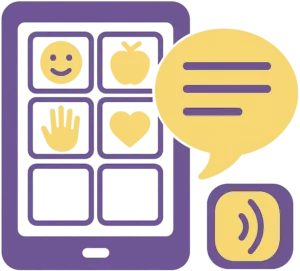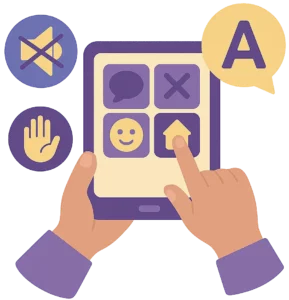
Giving Every Child and Adult a Way to Communicate
AAC is helpful for children and adults who experience difficulty with spoken communication due to:
AAC ranges from simple to high-tech solutions:

Call us at (845) 360-9323 or Request an Appointment.